DNA has been both one of the coolest and yet most difficult tools to use for Puerto Rican genealogy and research. For starters, many Puerto Ricans on the island share mutual ancestors, meaning that DNA has been repeated throughout our branches (sometimes multiple times) and thus create cousin matches seem closer in relation than what they actually are. A supposed “third cousin” but actually be a “fifth cousin” and when you are dealing with people that might not understand this issue in DNA, it can become difficult to find your common ancestors. Another issue sometimes is the lack of DNA tested cousins, for example, from regions that might be less represented outside of the island. In my case this occurs with my ancestry that connects back to Mallorca and also my ancestry in Guadeloupe/Martinique. This is why they say it’s good to “dip your toe” in each of the DNA pools to maximize your matches – these include AncestryDNA, 23andMe, MyHeritage, and FtDNA (in my opinion, these are the biggest players when it comes to accurate DNA analysis). MyHeritage for now has been a great place to make cousins with European cousins that otherwise I might not have been able to find since they usually do not test with Ancestry or 23andMe.
However, there are times when you strike a bit of luck! I have written multiple times about my luck in genealogy, but specifically in regards to DNA there are two posts that come to mind: “Genetic Connections to Guadeloupe” and “Chromosome 7 – An African American Connection“. Both of these posts have to do with my connection to others via DNA; despite not being able to firmly find a connection to these DNA matches, it was nonetheless important and eye opening for me to establish these connections. Both coincidentally are on my mother’s side of the family. In my post about my genetic connections to Guadeloupe I talk a bit about my own chromosome 11, which I want to expand on more today. This post will be about my direct connection to my maternal grandfather and our mutual connection to Nigeria via this shared DNA.
"¿Y tu agüel(O), Aonde ejta?
Many Puerto Ricans know this phrase “¿Y tu agüela, aonde ejta?” when it comes to talking about race in Puerto Rico. This title written in the “dialectal” form of Puerto Rican Spanish comes from a poem written by Puerto Rican poet Fortunato Vizcarrondo (1895-1977). The poem title written in standard Spanish would be ¿Y tu abuela, adónde está? (And your grandmother, where is she?) and the stanzas are a soliloquy-style poem where a darker skin Puerto Rican addresses a lighter skinned Puerto Rican who seems proud of their European features, but the darker skinned Puerto Rican continues to ask “and your grandmother, where is she?”. This is because though many Puerto Ricans can present as white/fair-skinned, many have grandparents and family members that are darker and whom they sadly choose to ignore in order to make themselves seem whiter (this also happens a bit in the genealogical community). Towards the end of the poem the darker Puerto Rican says that they are proud of their black grandmother while the other Puerto Rican is ashamed of theirs who can’t even come out to the living room of the house given that she is so dark (meaning that she would come in contact with those who visit their home).
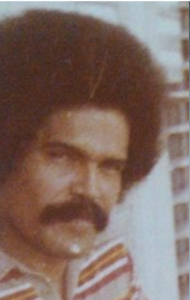
Like many Puerto Rican families, this is the case for my family as well – though I am light skinned, my grandfather was darker. He was very proud and we continue to be proud of his afro-boricua roots! Before my grandfather passed away I was fortunate enough to have taken various DNA tests for him and I had conversations with him about his roots. One of the most interesting conversations with him was when I asked about his family’s origins and he had said “we are black, but we were never slaves in Puerto Rico”. This struck me as an interesting comment because many afro-boricuas come from or have some sort of enslaved roots on the island (even white-presenting Puerto Ricans as well). Without much to go off, I tucked the comment into the back of my mind, and really did not think about it again until his DNA results came back and I started learning more about his family.

My grandfather to date has the highest amount of Sub-Saharan African DNA in all of my tested relatives on 23andMe (currently: 16 tested relatives). This came as no surprise to me based on my grandfather’s phenotype and stories of his ancestry. However, for such a high percentage could it be possible that his ancestors were never enslaved as he said? What my grandfather probably never knew (until I told him) was that despite our family not having been enslaved in Puerto Rico in recent generations, there were two branches that were enslaved in the French Caribbean, which I have talked about ad nauseam on this blog – my two branches that come from Guadeloupe and Martinique. Likely, my grandfather would have not known about these branches because (1) my grandfather was not raised by his father and (2) these ties come from Salinas, Puerto Rico and my grandfather was raised in San Juan, Puerto Rico. Probably my grandfather did not know much of his extended paternal family and would not have grown up listening to stories about the Jean Charles and Lautin branches of our family.
Similarly, in the above results you can see that my grandfather also has a high amount of Nigerian DNA, which no one else in my family has at such an amount. My current guess based on a bit of DNA evidence and genealogical records is that a good chunk of this Nigerian DNA is tied to the French Caribbean.
My grandfather's Nigerian DNA
My grandfather’s Nigerian DNA is much more spread out and in longer pieces of chunks compared to mine – this would mean that likely it was inherited recently from an ancestor who held more of this DNA. The most interesting chunks are on chromosomes 5, 6, 8, 11, and 18 because they are the largest of all the inherited Nigerian DNA. Specifically today I want to focus on Chromosome 11 – a shared area of DNA that I have inherited from my grandfather. Though Chromosome 8 is currently very promising as my grandfather does have a match with someone from Guadeloupe on it, my entire chromosome 8 comes from my maternal grandmother so I can not for now see how I have inherited some of that DNA (though it seems both of my brothers have inherited that chromosome from my grandfather – I will have to explore more of this later).
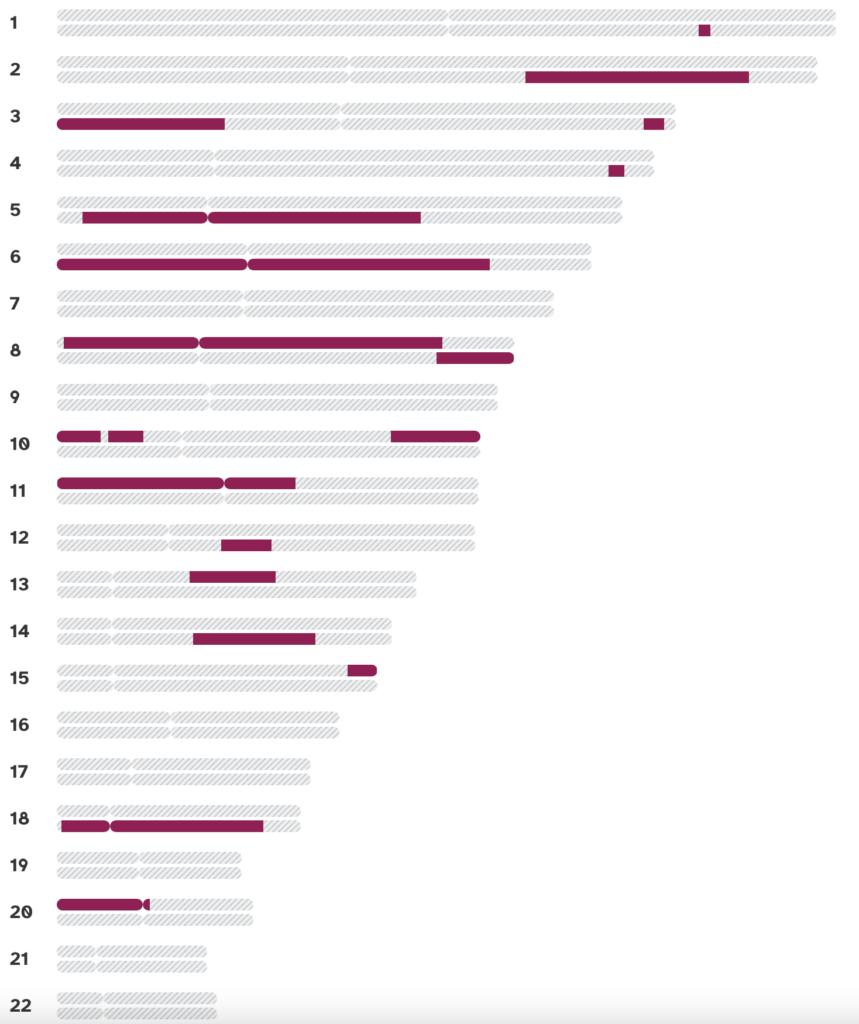
Looking at my grandfather’s chromosome 11 more in-depth we can see exactly where the Nigerian DNA comes into play amongst the other colors (denoting European and Indigenous DNA).

One of the questions you might have at this point is – how do you or even 23andMe know that this DNA is from Nigeria?
23andMe (and all companies that work with autosomal DNA) use reference populations in order to compare your DNA. This means that they look for people who are from those areas of the world or who have 4 grandparents from those countries in order to build reference points to which they can compare as they analyze your DNA. Depending on the company’s reference populations (the more and varied, the better), they can try and point specific ethnic/linguistics groups your ancestors share DNA with. This is something that is a work in progress and can be hit or miss, when I first tested about 12 years it only said “African” but as you can see, that has been changing over the years.
23andMe is working on diversifying and gathering more samples to compare to the different tribal groups in Nigeria/Africa as a whole to which our DNA can be compared given that country borders developed post-European contact and slavery do not necessarily answer to the tribal connections and DNA references they are seeing/using today. Below you can see some of the tribes from Nigeria you can match with, but currently my grandfather (or anyone in my family for that matter) has not been matched to a group of peoples from Nigeria yet. This is an exciting area of development, especially for us with enslaved roots from the African continent which we have not been able to crack yet given the limited access to information from that time period (which let’s be real, was very intentional from the colonial powers’ side).

Nigeria as a nation, and many other nations in Africa, have various ethnic and linguistic groups. In the map below you can see the other groups spread around Nigeria and their geographic locations/size.
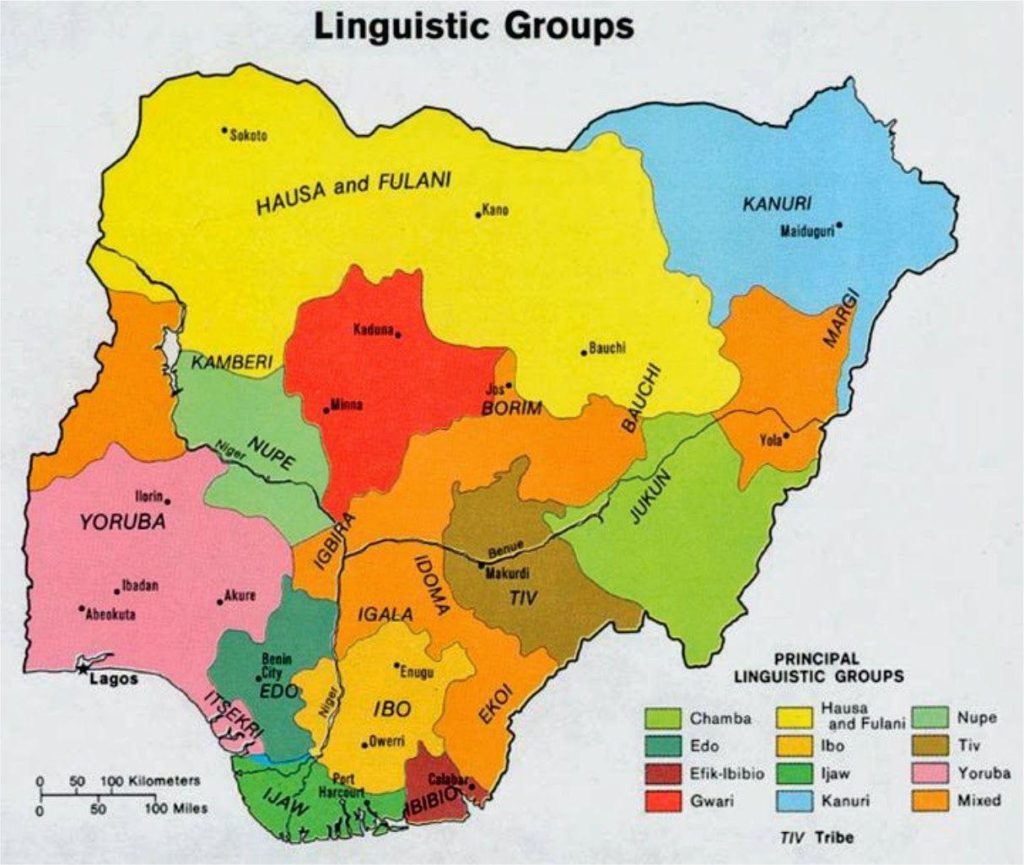
My Nigerian DNA

Though the amount I have of Nigerian DNA is less, it is nonetheless there and present. Even looking conservatively at my DNA on 23andMe, chromosome 11 still shows Nigerian DNA. This is good because it means that the odds of it being a fluke are definitely much less.

Since I have tested both of my parents, this means that my DNA is phased and it should be fairly easy to tell which parent gave me which side of the chromosome. Just with looking at my grandfather’s and my chromosome 11 we can see that he and I share that chunk of Nigerian DNA – a chunk that my own mother inherited and passed down to me. Knowing this information is important because when you match others you can easily distinguish where you match this person and potentially with whom in your tree you share this DNA. A great tool for this is DNA Painter, which I have previously talked about before on this blog.

By uploading both DNA matches and the Ancestry Composition into DNA Painter I am able to see specifically that in chromosome 11 the yellow section is DNA inherited specifically from my maternal grandfather Carlos Correa and that all of those matches that fall under this section share Nigerian DNA with me (marked in light green within the red box).
One specific cousin identified in MyHeritage for example shares DNA with my grandfather and I both on chromosome 11 – specifically with me at 39.3 cM. This cousin is identified as being from Guadeloupe on MyHeritage.
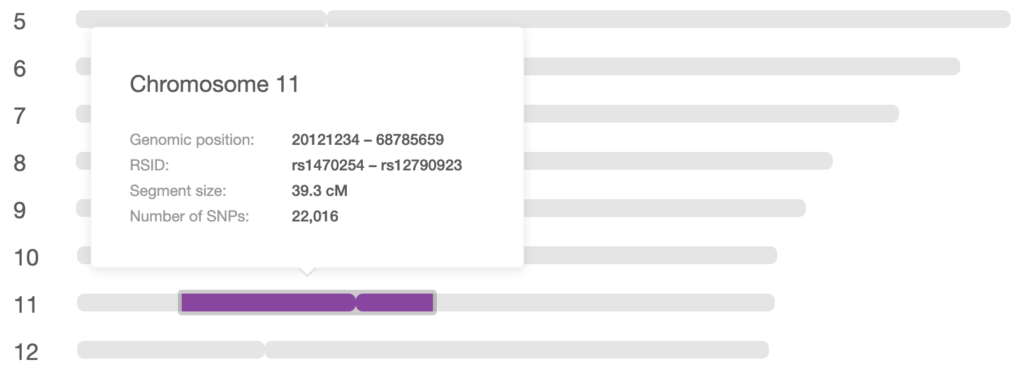
Another cousin on chromosome 11 shares in that same region with me 42.5 cM of DNA. This cousin does not show up as being from Guadeloupe however they only show up as living in France, so it is very likely they have a connection to the French Caribbean.
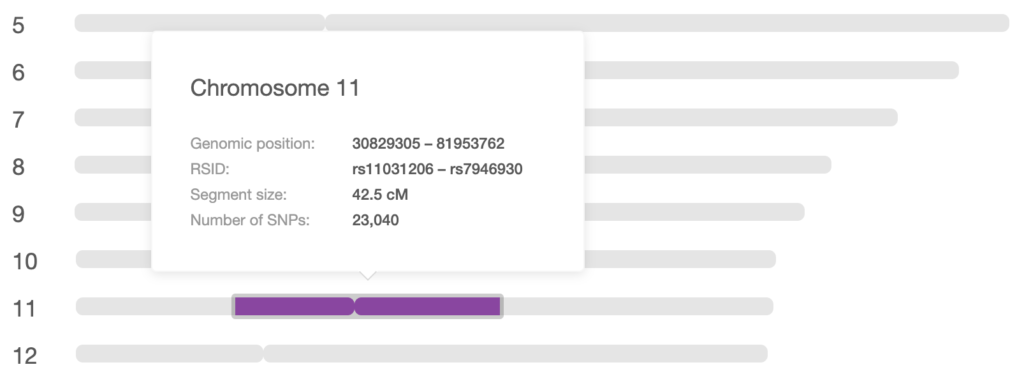
Using another tool in DNA Painter known as “The Shared cM Project 4.0 tool” allows you to see what range of a potential relationship you would share with those cousins. Below, you can see the expected range for both cousins that are 39.3cM and 42.5cM of shared DNA, respectively. Though the probabilities seem low, this is likely given how far they are from me. However, my 5th great-grandparents from Guadeloupe are 7 generations back which means that these possibilities seem to fit what I have in my tree.
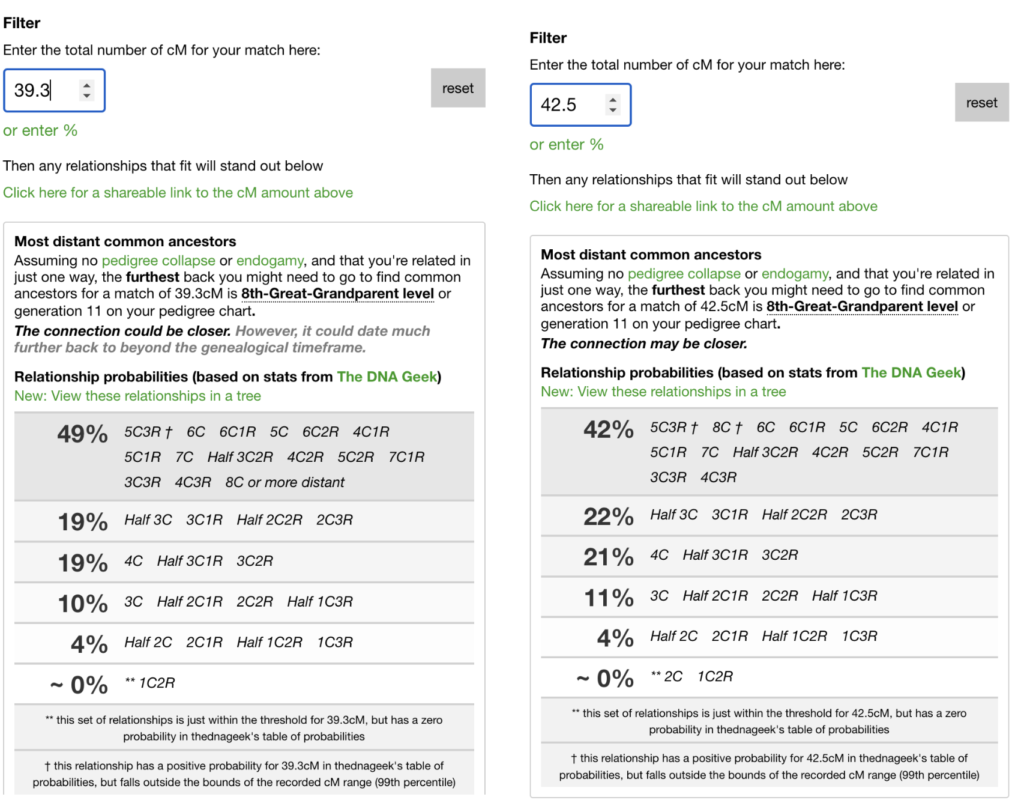
Conclusions
Given slavery and the lack of records right now to tie my family to other branches in the French Caribbean, the fact I have been able to get this far with the help of DNA is nothing short of amazing. Getting in contact with these two cousins and trying to find out how we are related would hopefully provide me more information on branches that were likely split in Guadeloupe during slavery. Though we right now we do not have an ethnic group within Nigeria either, I am hopeful that this one day will occur for my family! Learning about these types of connections help me to connect with branches I had not known growing up and have been able to rediscover via DNA and genealogy.
One day – it will be my goal to get to the French Caribbean and to the continent of Africa (with my eyes currently on Nigeria) to discover more about my family’s roots in these places and the legacy I carry from them.

